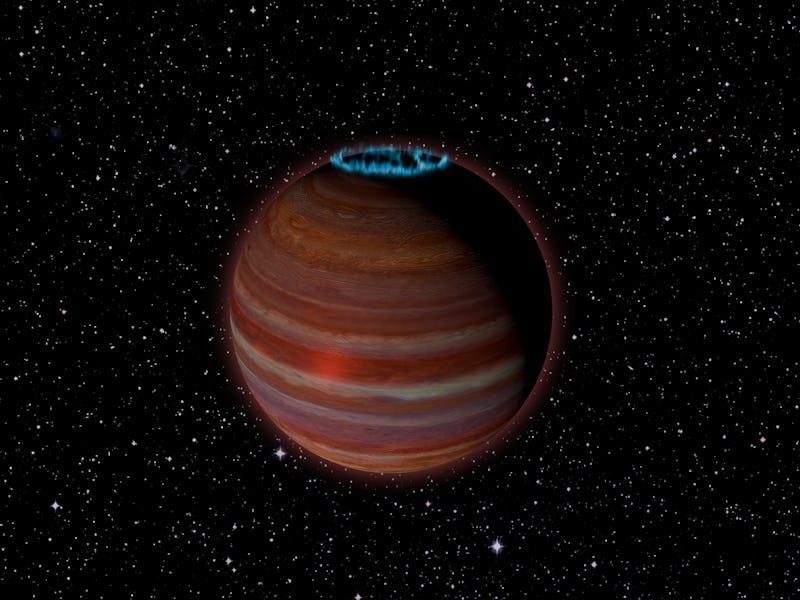Scientists Discover a Giant Rogue Planet Bumbling Around Space
"I'm just looking for my home."

Not all who wander are lost, but that might be the case for a newly discovered rogue planet. Scientists have found evidence of a giant planetary mass outside our solar system that appears to be traveling without any sort of set orbit or parent star.
This bumbling fool of a planet was first discovered by astronomers using the National Science Foundation’s Karl G. Jansky Very Large Array (VLA). From the radio astronomy observatory, scientists were able to pick up its magnetic activity and study it, the findings of which were made public on Thursday. It’s the first time the observatory’s radio-telescope detection was able to pick up a planetary-mass object beyond our solar system.
Artist's conception of SIMP J01365663+0933473, an object with 12.7 times the mass of Jupiter, but a magnetic field 200 times more powerful than Jupiter's. This object is 20 light-years from Earth.
While the discovery is a first for the observatory, the object, known as SIMP J01365663+0933473, was probably hard to miss given that it’s a “surprisingly strong magnetic powerhouse” roughly a dozen times larger than Jupiter. The planetary mass earned the “rogue” moniker for being untethered to any orbit or parent star or galactic authority. But just because it’s a celestial anarchist remaining outside a solar system of conformists doesn’t mean it can’t offer scientists important new insight on its magnetic properties.
“This object is right at the boundary between a planet and a brown dwarf, or ‘failed star,’ and is giving us some surprises that can potentially help us understand magnetic processes on both stars and planets,” said Melodie Kao, Hubble Postdoctoral Fellow at Arizona State University and leader of the study. “This particular object is exciting because studying its magnetic dynamo mechanisms can give us new insights on how the same type of mechanisms can operate in extrasolar planets — planets beyond our solar system.”
Although the SIMP J01365663+0933473 was first picked up in 2016, it was thought to only be a brown dwarf at the time. Kao’s discovery suggests that it could be classified as a planet in its own right, and could use a better name than SIMP J01365663+0933473.
At 200 million years old and 20 light-years from Earth, this rogue planet offers scientists a key to detecting exoplanets, including rogue ones such as itself that are more difficult to find because they are not orbiting a parent star.